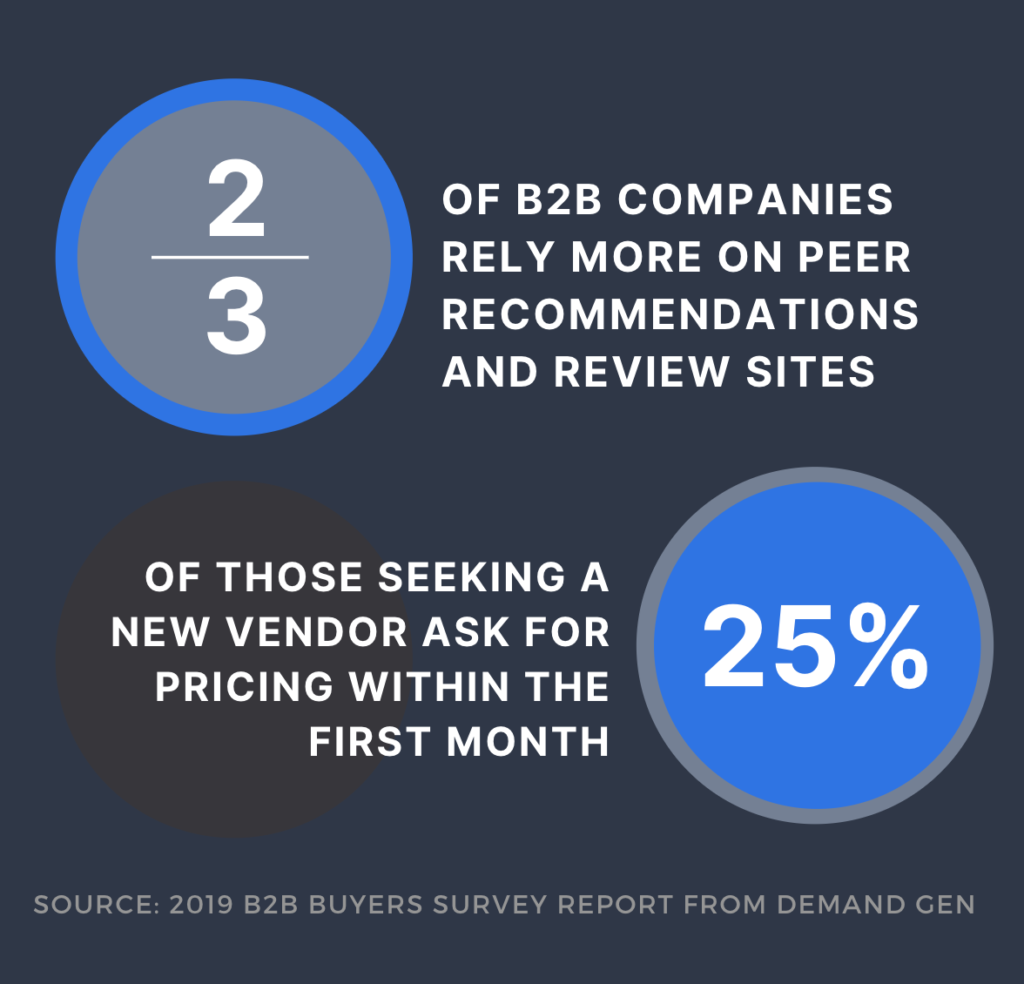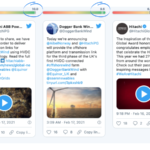It’s no surprise that companies need information about their competitors to sell. Usually this information is organized in sales battlecards. A 2019 survey found that 25% of B2B companies seeking a new vendor are asking for RFPs and pricing within the first month (up from 20% in 2018), indicating that buyers are engaging sales earlier in their process.

The same survey found that close to two-thirds say they rely more on peer recommendations and review sites. With decision makers spending more time researching and making quicker decisions, it’s very important that you know what your competitors are up to.
Many companies organize their competitive intelligence information into sales battlecards. Simply put, battlecards provide a breakdown of you vs. your competitors. Sales battlecards can include all sorts of information – they usually include things like strengths and weaknesses, pricing and product info.
If not done well, battlecards can be a huge waste of time and it could be time for you to retire them. Here are four reasons why sales battlecards may not be the best tool:
Reason 1: Only the sales team uses sales battlecards
As their name suggests, sales battlecards are primarily used by the sales team. Your sales reps aren’t the only people having hundreds of conversations with customers and potential customers though. What about the marketing person who fields tweets and messages throughout the week? Or the marketer who reads and responds to reviews? What about your account managers who help ensure customers are retained?
Since battlecards are only used by the sales team, usually the sales team is who creates all of them too. There are plenty of other people and departments within your company who could provide important information.
The marketing team has a lot of insight into what channels your competitors are on and what messaging they’re using. Your account team knows why customers are staying with you and what their needs are. Your company executives probably read a lot of industry news and have ideas on what might be coming soon.
Reason 2: Updates to sales battlecards aren’t made regularly
Do you remember having to look up things in the encyclopedia before we had the internet? 2010 was the last year they printed the Encyclopedia Britannica (I was also surprised they were printed for that long). Technology only continues to get faster and faster and so does our need for timely, relevant information.
If you’re using battlecards, they should not be like encyclopedias. They should be living documents that are updated frequently. Oftentimes they’re turned into fancy PDFs or static images and tucked away into an onboarding folder in Google Drive.
If this is happening at your company, they’re going to start collecting dust just like those 129 pound gold-lettered reference books that your great-grandpa still has.
It becomes embarrassing for a sales person if they’re caught talking about information that is old or incorrect. It’s incredibly time consuming to keep battlecards updated, especially when new competitors are always popping up and they’re launching new products and services.
Reason 3: Sales battlecards only compare products
Of course your sales team needs competitor product information. They need a list of features and they need to know pricing so they know what they’re selling against. Your sales team also needs company information. They need to know the competitor’s positioning, their messaging, what channels they’re using, their customers, and their customer stories / case studies.
Understanding how a competitor wins business can help you out-sell them. Knowing what channels they’re using (do their sales reps use LinkedIn? Are they running Google Ads?) and knowing what their customers are thinking (reviews, testimonials, and case studies) can help you determine your own sales strategy.
Reason 4: Battlecards become battle encyclopedias
The purpose of sales battlecards is to provide an overview of what your sales reps need to know about a competitor. Trying to distill all your competitive information down to a condensed format is much harder than you’d think. Especially since we just talked about everything they should include.
Typically, instead of a one page doc on each competitor, battlecards end up being several pages long. A lot of sales teams end up with “battle books” instead of “battlecards.” Or battle encyclopedias.
When sales battlecards become too long they’re less likely to be used. When they contain too much information it can be hard to keep them standardized in a similar format. All of this leads to sales reps not using them because it’s too hard to find what they’re looking for.
Ok, battlecards aren’t the best tool for us, but what should we use instead?
Now that you know all the information that should be in sales battlecards, you’re probably thinking, “How do I fit all this information in a one page document and ensure our entire organization uses it and also make sure that it’s fresh with updates from all these departments on at least a weekly basis?”
The short answer: you can’t. Which is why they don’t work. With the help of machine learning and cloud-based technology sales battlecards are a dying trend. Now there are many software solutions to help you ensure your marketing, sales, and executive teams have all the latest information on your competitors.

Signal Insights can deliver all the relevant news, social posts, blogs, industry news, press releases, and emails straight to your inbox. This eliminates the need to go searching for a document to update when you see a competitor launched a new product. Or letting all of your coworkers know when you’ve made the update. Everyone can view the same timely, relevant information at any minute.
Sales people should figure out what strategies work best for them instead of everyone following a cookie-cutter sales approach. So ditch the battlecards.


